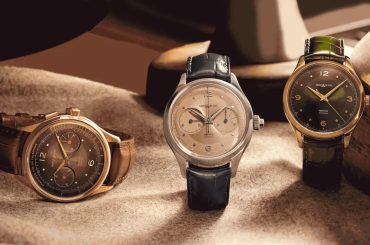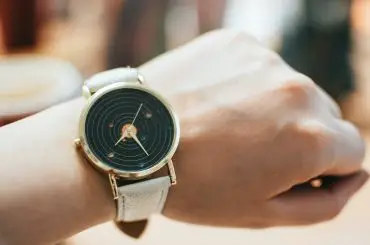Why do watches have jewels? Jewelry and watches have a lot in common. They’re made out of precious metals like gold or silver. They both have moving parts and can be used to tell time. But there are some differences between them, too: jewelry usually has more decorative features than watches. In contrast, watches use more complex mechanisms inside their movements than other mechanical devices.
Contents
- 1 Why do watches have jewels?
- 1.1 Jewels are used for regulating the rate of movement and timekeeping.
- 1.2 Typically, this means higher quality timepieces with more accurate times than those with fewer jewels.
- 1.3 Jewels are used for timekeeping and regulating the rate of movement.
- 1.4 The term “jewel” is used for any number of items set in a ring.
- 1.5 Different shapes of jewels are used for different movements or mechanisms in watches.
- 1.6 In watches, jewels are used for timekeeping and regulating the rate of movement.
- 1.7 Jewelry and watches have much in common; they’re made of precious metals.
- 1.8 Knowing the Jewel Count
- 2 Conclusion about why do watches have jewels?
Why do watches have jewels?
Jewels are part of the movement, not just decoration.
Jewels are used for regulating the rate of movement and timekeeping.
A jewel is a small piece of metal that’s been fashioned into a shape that can place inside a watch’s gear train (the mechanism that controls how fast or slow it spins). The finer will regulate its rate when there are more jewels in a particular watch movements type, such as Swiss lever escapement or Automatic.
Typically, this means higher quality timepieces with more accurate times than those with fewer jewels.
Synthetic rubies, sapphires, jewels, and jewel bearings are set into various watch movement components. They are intended to lessen friction between the moving parts. Their construction offers a firm surface that permits the metal parts to move freely. On the Mohs hardness scale, rubies come in at “9,” just behind diamonds at “10.”
Jewels are used for timekeeping and regulating the rate of movement.
Jewels are used to regulate the rate of movement. The watch run rate depends on several factors, including construction and materials.
- To keep time
- To control its running speed;
- To prevent it from moving too quickly or slowly
The term “jewel” is used for any number of items set in a ring.
The term “jewel” is used for any number of items set in a ring. This can include gemstones and diamonds, but it also includes other parts set into watch movements.
Different shapes of jewels are used for different movements or mechanisms in watches.
While a jewel may seem decorative, it’s used for more than just looking pretty. A watch with jewels has several different functions:
- Timekeeping and regulating the rate of movement (the mechanism that controls how fast or slow time advances)
- Different kinds of movements or mechanisms in watches
People use the word “jewel” to refer to gemstones and diamonds, but in watches, it refers to both types of stones and other parts that are set into watch movements.
In watches, jewels are used for timekeeping and regulating the rate of movement.
Jewels are also used on watch cases and dials because they help hold them together and make it easier to see through them when looking at your wristwatch from an angle (like when you’re holding up your arm). Some people say that jewels are what make watches so beautiful!
Jewelry and watches have much in common; they’re made of precious metals.
Jewels are used for decoration in both jewelry and watches, but there’s more to it than that. They’re also used as parts of mechanisms that keep time on your wrist (or wherever else you wear it).
Knowing the Jewel Count
The number of jewels in the movement can vary depending on the brand and model, and the jewel count shows how many were found. Although some brands go as high as 21 jewels to reduce positional errors, a 17-jewel count is generally considered fully jeweled. Earlier models of vintage watches with less expensive movements frequently have only 5 or 7 jewels. Higher jewel counts usually reflect higher quality, accuracy, and craftsmanship.
When a watch movement uses a steel or brass bearing, friction increases, drawing more energy from the mainspring and reducing the movement’s power reserve and lifespan. Wheel pivot bearings, calendar mechanisms, pallet stones, and other automatic and manual winding components all contain jewels. If your watch has an exhibition case back, you can frequently see a few jewels on display. Find automatic or manual-wind timepieces, or browse all watches with an exhibition case back.
Conclusion about why do watches have jewels?
In short, jewels are just another way to make a watch movement work. A watch movement has many features, such as a balance spring, movement plate and bridges. Jewels are crucial to the movement, enhancing its longevity and accuracy. Jewels used in movements should be distinct from gem-setting on dials, bezels or cases.
Image credits: Pixabay.com
Read more: Why is Richard Mille watches so expensive? Best watches since 2001

![Why do watches have jewels?[ Beauty of chronographs ] Why do watches have jewels](https://nextfashionera.com/wp-content/uploads/2023/02/watch-166849_1920-min.jpg)



